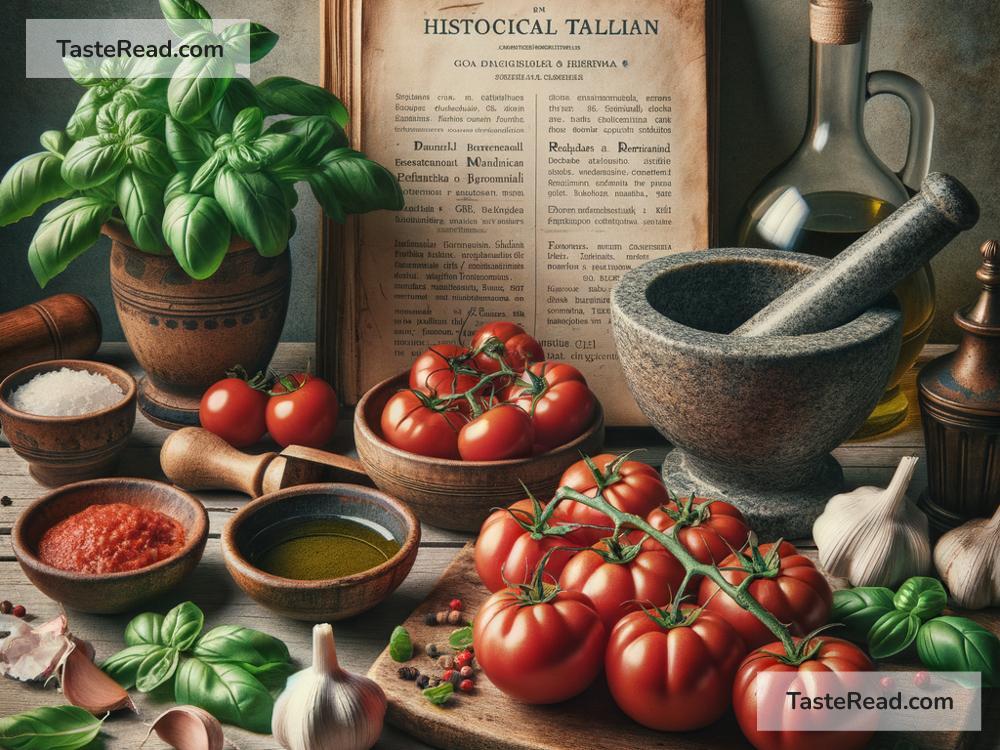The Curious Story of Tomatoes in Italian Cuisine
When you think about Italian cuisine, what comes to mind? Probably a steaming plate of spaghetti smothered in bright red tomato sauce, or a crispy slice of Margherita pizza topped with fresh tomatoes, mozzarella, and basil. Tomatoes seem to be at the heart of Italian food. But here’s the strange part: tomatoes weren’t even part of Italian cuisine until a few hundred years ago! Their journey to becoming a staple of Italian cooking is as fascinating as it gets.
Tomatoes Were Not Always Italian
Tomatoes are native to South America. Long before they reached Europe, they grew wild in the Andes Mountains. The indigenous peoples of the region began cultivating tomatoes thousands of years ago, eventually introducing them to the Aztecs and other civilizations in Mexico. The Aztecs called them tomatl, which is where the English word “tomato” comes from.
In the 16th century, Spanish explorers brought tomatoes to Europe after their conquests in the Americas. At that time, Italy was not yet a unified country but a collection of city-states, many of which were influenced by Spain. Tomatoes arrived on Italian shores during this period, but Italians didn’t immediately embrace the fruit.
A Suspicious New Plant
When tomatoes first arrived in Italy, they were viewed with suspicion. Europeans thought tomatoes were strange and possibly dangerous. Their bright red color and resemblance to other plants in the nightshade family (some of which are poisonous) made people cautious. Some even believed tomatoes could cause illness or madness. For years, tomatoes were only grown for decorative purposes, not for eating. People admired their beauty but stayed far away from their dinner plates.
Meanwhile, in other parts of Europe, tomatoes were being used sparingly. In Spain, they were added to simple dishes, and in France, they were included in sauces. But in Italy, tomatoes still weren’t considered food.
A Culinary Breakthrough
By the late 17th and early 18th centuries, attitudes began to shift. Italians started experimenting with tomatoes in their cooking, and tomato recipes gradually appeared in cookbooks. One of the first mentions of tomatoes in Italian cuisine can be traced back to Naples in the 18th century. Naples, famous for its vibrant food culture, played a key role in integrating tomatoes into everyday dishes.
The development of tomato-based sauces was a turning point. Italians discovered that cooking tomatoes transformed their flavor, making them less acidic and more savory. This discovery marked the beginning of the tomato’s rise in Italian cuisine.
Tomatoes and the Rise of Italian National Identity
The 19th century was a time of great change in Italy. The country unified in 1861, and people began to feel a stronger sense of national identity. Food, as always, played an important role in shaping culture. As Italians looked for dishes that represented their heritage, tomatoes became a natural choice.
The introduction of pasta with tomato sauce helped cement tomatoes as a staple in Italian cooking. The dish was simple, affordable, and delicious—a perfect match for the Italian people. Spaghetti alla marinara, a popular version of pasta with tomato sauce, became a household favorite. Soon, variations of tomato-based recipes spread across the country.
Pizza: A Tomato Success Story
You can’t talk about tomatoes in Italian cuisine without mentioning pizza. Pizza has ancient roots in Italy, but the modern pizza as we know it today—complete with tomato sauce—didn’t emerge until the late 18th century. Before then, flatbreads were typically topped with oil, herbs, and cheese, but tomatoes weren’t part of the equation.
Legend has it that the tomato-topped pizza gained fame in Naples when a baker created a special pizza for Queen Margherita in 1889. The baker used three ingredients to symbolize the colors of the Italian flag: red tomatoes, white mozzarella, and green basil. The pizza was a hit, and “Pizza Margherita” became a classic.
Tomatoes Today
Fast forward to today, and tomatoes are an integral part of Italian cuisine. It’s hard to imagine the country’s most iconic dishes—pizza, pasta, lasagna, caprese salad—without tomatoes. They’re used fresh, roasted, sun-dried, or pureed into sauces. Canned tomatoes, especially the beloved San Marzano variety from southern Italy, are a pantry staple.
What’s even more remarkable is that the love for tomatoes extends far beyond Italy. Italian cuisine has spread across the globe, and with it, the use of tomatoes in cooking. Whether you’re in New York, Tokyo, or Cape Town, you’re likely to find Italian dishes featuring tomatoes in abundance.
Conclusion
The story of tomatoes in Italian cuisine is one of unexpected transformation. From being a foreign and mistrusted plant to becoming the heart and soul of Italy’s most treasured dishes, tomatoes embody resilience and creativity. They remind us that even the most unfamiliar ingredients can be embraced and turned into something beautiful.
So, the next time you enjoy a bowl of pasta with tomato sauce or bite into a slice of pizza, take a moment to appreciate the curious journey of the tomato. It’s not just food—it’s history, culture, and a testament to the power of culinary innovation. Buon appetito!


